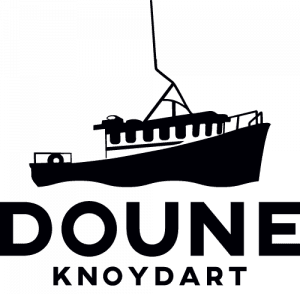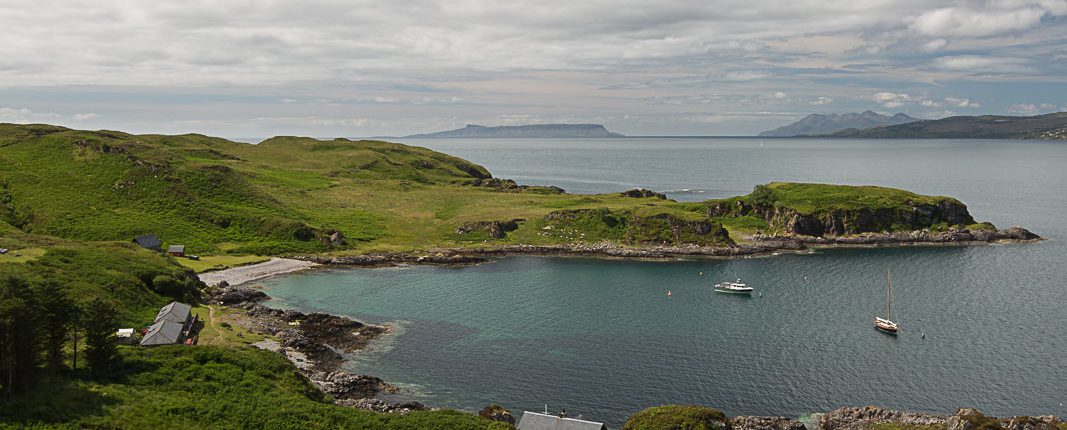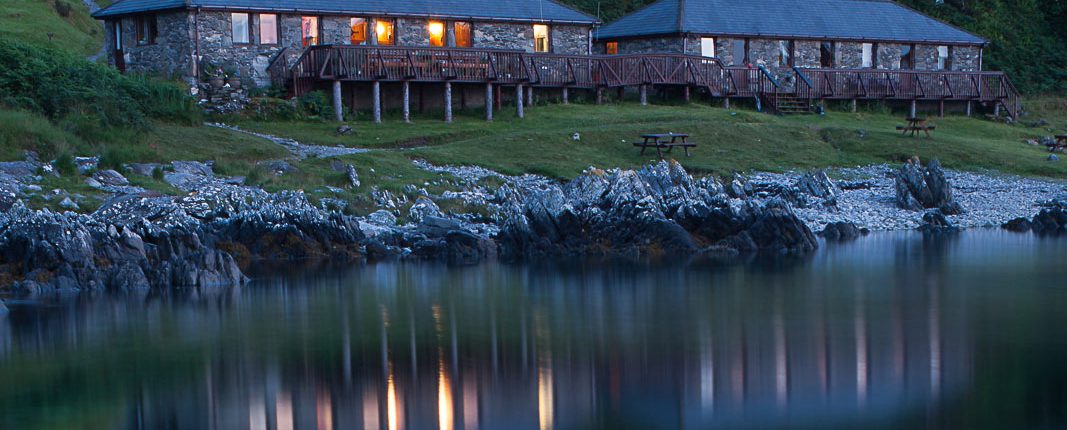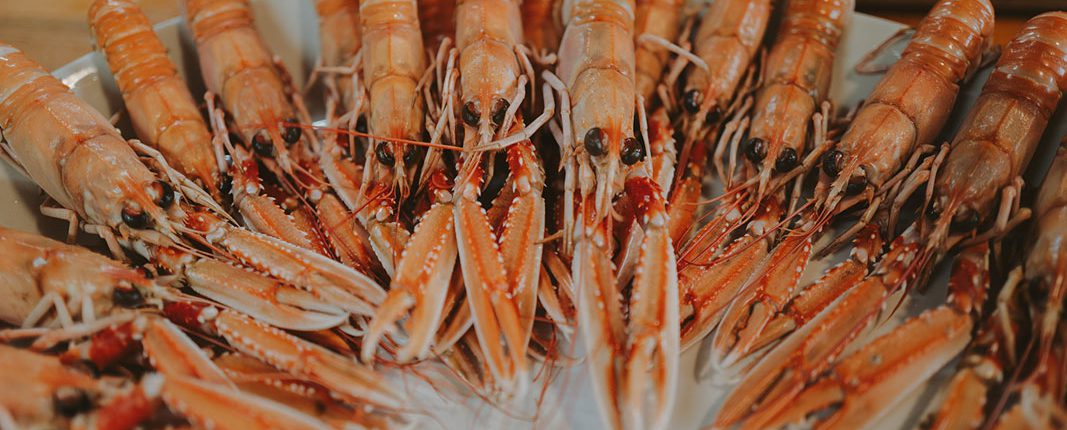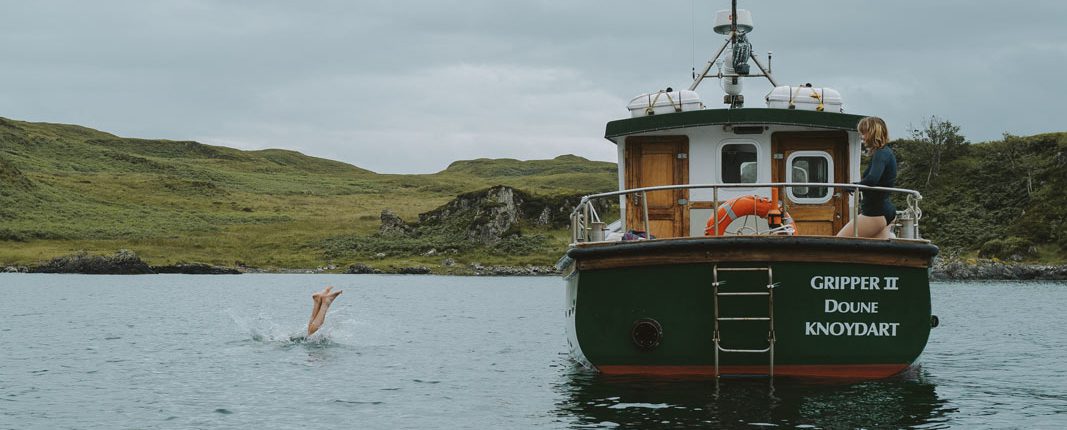The oldest historical site (3-4000 years old) on Knoydart is to be found at Doune. It is an Iron Age (Pictish) vitrified fort on Dun Head. The Dun (from where Doune gets it’s name) now consists of the remains of a defensive wall around the upper part of the headland. The wall itself is largely buried, but is visible in a couple of places. It is made of small rocks fused together by heat (vitrified), although there is much argument about how this was done. It would certainly have required an enormous amount of wood to be burnt.
Up the glen behind the Lodge, is the remains of Doune village, which existed up until 1853, when it was cleared for sheep, (along with most of the other villages along the Western shore of Knoydart). The people left, thinking they were on their way to Australia, only to find themselves deposited in Nova Scotia, where there is now a village called Knoydart.
Before the clearance, Doune was the largest village on Knoydart with over 130 people living here. But by 1860, there were only 8 people, all one family, brought in to look after the sheep.
Around this time, people were living in “blackhouses”, so called because they had no chimneys or windows, the smoke from the peat fires finding it’s way out through gaps in the roof and walls. There are many ruined examples of these houses around Doune. The dining room walls were built using the stone from one such building. Immediately to the North of Doune, and about ½ mile to the South are caves which were used as shelter by people evicted from their homes during The Clearances.
Also around Doune and anywhere where there was habitation, there are “lazy beds”, the hand turned furrows on which all crops were grown. There were very few animals and the ground was unsuitable to horse drawn ploughs (if they had been available), so all were turned by hand, using the “gas-chrom” or foot plough.
Over towards the bay immediately south of Doune, there is a corn kiln. A shallow, stone dish some 8ft in diameter, with room for a fire beneath, it lies to the shore side of a tall pillar of natural stone. Beyond the corn kiln, on the south side of the bay, is a sheep fank, built in the later part of the 1800’s, perhaps by the same Irish dykers who built the white house.
To the South of Dun Head, is An Faochag (the winkle), known locally as Marianne’s Point. Renamed by local fishermen after an old lady who would provide cups of tea to passing boats. Where, or exactly when Marianne lived is uncertain.
After occupation by many shepherds and their families, Doune laid empty until in 1982, the now ruined house was taken on by Alan and Mary Robinson and their two young sons, Toby and Jamie. Over the next few years, they rebuilt the white house, built a pier, a slipway and Gripper (now superceded by Gripper II). When Jamie and Toby left school and could devote more time to the business, they built the Lodge (1989) and Mary Doune (1990).
By 1992, Doune was continuing to expand and after starting on the rebuild of Eda Frandsen (the 60ft decommissioned fishing boat they brought back from Denmark), the Robinsons decided to ask Andy and Liz Tibbetts to join them.
Then in 1993, disaster struck, with the fire that gutted Eda and destroyed the boatshed with all our tools. It took a whole year to come to terms with this, before we could start again. We replaced the old wooden boat shed with the purpose built workshop we have now and in 1994 the Stone Lodges and the Dining room were completed. Then with Toby’s expert management, a band of volunteers replaced Eda’s damaged planking and decking, and at last in 1996, she was relaunched.
Since then, expansion at Doune has been a more personal affair. 2003 saw Doune developing into a proper community. Alan and Mary retired and moved into a lovely home built here at Doune and we were delighted to be joined by Martin and Jane Davies and their two daughters Alexandra and Pippa who moved into the White House to run the Stone Lodges and the Dining room. In 2021, Doune changed hands again as Martin and Jane retired and Rebecca Rutherford and Andrew Brodie took the helm.
